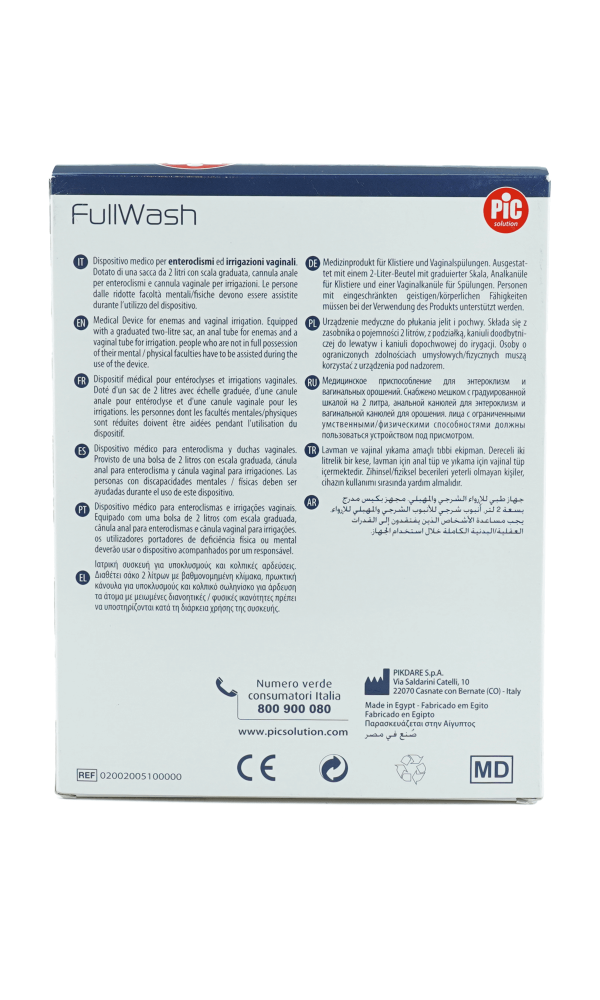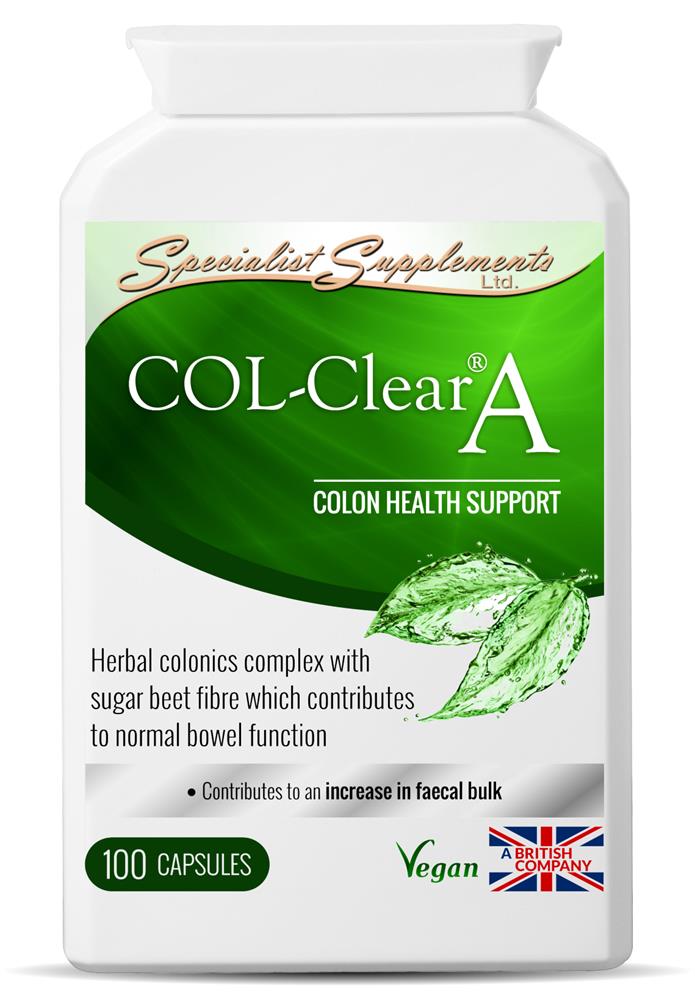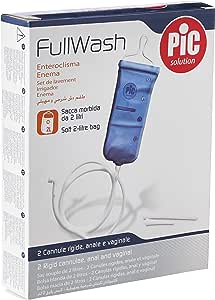What Is An Enema Kit?
An enema kit is a therapeutic procedure in which fluid is introduced through the anus into the rectum and colon. This procedure helps to cleanse the lower intestine and can be used for a variety of purposes, such as relieving constipation, preparing for medical procedures or administering medication. Enemas have been practised for centuries and continue to be used as a useful health treatment today.
Definition of enema
An enema involves introducing a specific amount of fluid into the rectum and colon. This fluid helps soften and stimulate the bowel, facilitating waste elimination. The fluid used in an enema can vary depending on the purpose of the enema, such as plain water, saline solution, herbal mixtures or medicinal solutions.
Types of enemas
There are different types of enemas, each with a specific purpose and using different substances. Some common types of enemas are:
- Cleansing enemas: these enemas use pure water or a saline solution to cleanse the colon and remove stool.
- Retention enemas: This type of enema is given to moisten and soften the rectum and lower bowel, usually using mineral oil or other lubricants.
- Medicated enemas: Medicated enemas are used to deliver certain medications directly into the colon, such as anti-inflammatory, antispasmodic or other prescribed medications.
- Barium enemas: Barium enemas are used for diagnostic purposes in radiology, where a barium sulphate solution is introduced into the colon to provide contrast for X-rays.
Use of enemas
Enemas serve a variety of health purposes and can be used for a wide range of conditions and situations, including:
- Constipation relief: enemas are often used to relieve constipation by softening the stool and promoting bowel movements.
- Preparation for medical procedures: enemas can be used before certain medical procedures or surgeries to cleanse the bowel and create a clean environment for the procedure.
- Bowel cleansing: Enemas can be part of bowel cleansing regimens and help eliminate toxins and debris in the colon.
- Medication administration: In some cases, medications are administered directly into the colon through enemas to act on the colon irrigation and enema kit.
Benefits of enemas
Enemas offer several potential benefits for people who wish to relieve constipation or need special medical procedures. Some notable benefits of colonic enemas include
- colonicRapid relief: Enemas can provide rapid relief from constipation by directly stimulating bowel movements.
- Effective absorption: When medications are administered, colonic enemas allow them to be absorbed directly into the bloodstream through the colon, bypassing the digestive tract.
- Intestinal cleansing: enemas can help remove accumulated waste, toxins and bacteria from the colon, promoting a healthier digestive system through irrigation
- Preventive measure: regular use of enemas can help prevent certain conditions, such as constipation, by keeping the bowels regular and preventing constipation.
Now that we have explored the basics of enemas, let’s move on to the next section, where we will discuss how to use a home enema kit effectively.
How to use a home enema kit
Proper use of a home enema kit is important to ensure safety and maximise the benefits of the procedure. In the next section, we will cover the steps necessary to prepare and perform a home enema and the necessary usable aftercare. Stay tuned for more information!
Using a non-practitioner durable home enema kit
Using a home enema kit can be a safe and effective way to administer an enema from the comfort of your own home. Whether you want to relieve constipation or administer a prescribed treatment, knowing the proper steps for using a home enema kit is important. This section will guide you through the process, including preparation, enema administration and aftercare.
Preparation

Before using a home enteroclisma enema kit, it is important to prepare properly to ensure a smooth and successful process. Below are the steps you should take to prepare:
- Get the necessary utensils: Gather all the items you will need for the enema, including the enema kit, lubricant, a clean towel and a comfortable place to lie down.
- Read the instructions: Carefully read and familiarise yourself with the instructions that come with the enema kit, as there may be slight variations in how to use different kits.
- Choose the right place: Find a private, comfortable place in your home where you can lie down comfortably and perform the enema without interruption.
- Clean the area: Wash your hands thoroughly with soap and warm water and clean the rectal area with mild soap and water or as directed in the instructions to ensure proper hygiene.
- Prepare the enema solution: Follow the instructions in your enema kit to prepare the enema solution, for example, by mixing water with a pre-packaged solution or using a pre-mixed enema solution.
- Warm the enema solution: If the instructions for use recommend warming the enema solution, place the container in a warm water bath for a few minutes. Make sure the solution is at a comfortable temperature before use, as indicated in the instructions for use.
Administering the enema
Once you have completed the preparation steps, it is time to administer the enema. Follow these guidelines for successful enema administration:
- Adopt a comfortable position: lie on your left side with your knees bent or adopt the position indicated on the enema kit you are using. This position facilitates the flow of the enema solution into the rectum.
- Lubricate the enema tip: Apply a generous amount of water-soluble lubricant to the tip of the enema nozzle to ensure smooth insertion and reduce discomfort.
- Inserting the enema nozzle: Insert the lubricated enema nozzle carefully and slowly into the rectum, following the instructions. Do not use force and stop if you feel uncomfortable.
- Administer enema solution: Gently squeeze the enema bottle or bag to start the flow of the solution. Maintain a slow, steady flow so that the fluid can comfortably enter the rectum. When instructed, adjust the height of the enema bag to control the flow rate.
- Hold the enema solution: once the enema bag or bottle is empty, remove the nozzle but remain in the same position. Keep the enema solution inside for the recommended time as indicated in the instructions.
- Dissolve the enema: after the recommended retention time has elapsed, go to the toilet and dissolve the enema. Be prepared for a bowel movement shortly after dissolution.
Postoperative care
Proper postoperative care after an enema contributes to comfort and hygiene. The following are the most important steps to follow:
- Clean the area: Clean the rectal area thoroughly with mild soap and water or as instructed, and gently dry the area with a clean towel.
- Drink plenty of fluids: Drink plenty of water to compensate for fluid loss during the enema and to promote healthy bowel movements.
- Rest and relax: Get some rest after the enema to allow your body to adjust and recover.
- Clean and store the enema kit: Thoroughly clean the enema kit components according to the instructions and make sure they are completely dry before storing them in a clean, hygienic place for later use.
Now that you have learned how to use a home enema kit effectively, let’s move on to the next section, which is about choosing the right home enema kit.
Choosing the right home enema kit
Choosing the right home enema kit is crucial for a safe and effective enema experience. As there are numerous options on the market, it is important to consider certain factors before making a purchase. In this section, we will examine the different types of home enema kits and provide valuable tips on the factors to consider when choosing one.
Types of home enema kits
Home enema kits come in different forms, each with a specific purpose. Knowing the different types will help you make an informed decision. Below are some common types of home enema kits:
- Bucket syringe enema kits: these kits consist of a bullet-shaped syringe with a nozzle, bucket syringe enema kits are compact and convenient for quick and easy administration of enemas.
- Bucket or bag enema kits: Bucket or bag enema kits consist of a container (bucket or bag) containing the enema solution and a tubing system with a nozzle for administration. These kits offer a larger capacity and are suitable for people who need a larger volume of enema solution.
- Enema kits with enema bottles: Enema kits with enema bottles are often similar to traditional enema bottles, but are designed specifically for enemas. They have a mouthpiece for administering the enema solution and are usually compact and easy to carry.
- Travel enema kits: Travel enema kits are designed to be portable and convenient and often have compact containers or collapsible pouches, making them suitable for people who travel frequently or are on the move.
Factors to consider when choosing a home enema machine
When selecting an enema machine for home use, consider the following factors to ensure that you make the right choice for your specific needs:
- Purpose: determine the primary purpose for which you are using the enema set – are you looking to relieve occasional constipation or are you following a regimen prescribed by a doctor? Different enema sets may be better suited for different purposes.
- Ease of use: Look for an enema set that is easy to use and easy to assemble, disassemble and clean. Pay attention to the complexity of the instructions and choose a set that suits your comfort level.
- Materials and quality: Opt for enema sets made of high-quality materials to ensure durability and longevity, and make sure the materials used are safe, e.g. BPA-free plastics or medical-grade silicone.
- Capacity: If you need a larger volume of enema solution, opt for a larger capacity bucket or bag enema set; for smaller volumes, a bucket syringe or rinse bottle enema set may be sufficient.
- Comfort and safety features: Look for enema machines that focus on comfort and safety. Features such as adjustable flow control, soft and flexible nozzles, and leak-proof designs can enhance your overall experience.
- Cleaning and maintenance: Pay attention to the ease of cleaning and maintenance of enema equipment, and look for equipment that can be easily disassembled and thoroughly cleaned to ensure hygiene.
- Price: compare prices of different enema machines and make sure they fit your budget, but prioritise quality and features over price, as a reliable and well-designed enema machine will give better results and last longer.
Next steps: safety precautions for using an enema machine at home
Now that you are more familiar with the different types of home enema kits and the factors to consider when choosing one, it is important to know the safety precautions associated with their use. In the next section, we will explore general safety precautions, as well as those specific to the different types of enemas.
Safety precautions when using a home enema kit
Using a home enema kit requires careful attention to safety guidelines to ensure a positive and safe experience. It is essential to follow general safety precautions and to understand the specific safety measures for different types of enemas. In this section, we will discuss important safety considerations to keep in mind when using a home enema kit.
General safety precautions when using an enema Kit
Regardless of the type of enema you administer, it is important to follow these general safety precautions:
- Read and understand the instructions for use: familiarise yourself with the instructions for the use of your enema kit and pay close attention to the recommended uses, warnings and contraindications.
- Ensure good hygiene: wash your hands thoroughly with soap and warm water before and after handling the enema kit, and ensure that the anal rectal area is clean before administering the enema.
- Use sterile or clean material: Ensure that all components of the enema kit, including the nozzle and tubing, are sterile or have been thoroughly cleaned and disinfected before use.
- Check the temperature: Check the temperature of the enema solution prior to administration to ensure that it is within a comfortable and safe range. Follow the instructions provided with the enema kit for temperature recommendations.
- Administer enema at a comfortable pace: Avoid using excessive force or administering the enema solution too quickly, as this may cause discomfort or injury. Maintain a slow, steady flow as recommended.
- Discontinue use if you experience pain or discomfort: If you experience severe pain, cramping or other unusual discomfort while using the enema, discontinue use immediately and seek medical attention if necessary.
Specific Safety Precautions for Different Types of Enema Kit
Certain types of enemas may require additional safety precautions due to the nature of the procedure. Observe the following precautions when administering different types of enemas:
- Cleansing enemas:
- Ensure that the enema solution is not too hot or too cold to avoid thermal injury to rectal tissues.
- Avoid using harsh or irritating substances in the enema solution, as they may damage the rectal mucosa.
- Retention enemas:
- Use a lubricant, such as mineral oil, to ease the insertion of the enema nozzle and reduce discomfort.
- Hold the enema solution for the recommended time, as exceeding this may cause irritation or damage.
- Medicated enemas:
- Administer medicated enemas only as directed by a physician or as directed.
- Be aware of possible side effects or adverse reactions associated with the medications used in the enema.
- Barium enemas:
- Barium enemas are usually performed under the supervision of a physician and require special equipment and training. It is important that you follow the instructions of the physician performing the procedure.
Next steps: Frequently asked questions about colon enemas
Now that you are familiar with the safety precautions for using a home enema kit, it is time to address the most common questions and concerns. in the following section, we will answer the most frequently asked questions about enemas and provide you with valuable information to help you better understand them. click the link below to purchase. add to cart or checkout
Frequently asked questions about enemas
In this section, we will answer some frequently asked questions about enemas to give you a complete understanding of this therapeutic procedure.
Frequently Asked Questions
Q1: Are enemas painful? Answer: Enemas should not be painful if used correctly and carefully. However, some people may experience mild discomfort or cramping during the procedure. If you experience severe pain, it is important that you discontinue the enema and seek medical advice.
Q2: How long does it take for an enema to take effect? A: The time it takes for an enema to take effect varies from person to person. In general, you can expect the enema to stimulate bowel movements within a few minutes to an hour after administration.
Q3: Can enemas be used for weight loss? A: Enemas are not intended for weight loss. They may provide temporary relief from constipation and promote bowel movements, but enemas do not cause long-term weight loss.
Q4: Can enemas be addictive? A: Appropriate use of enemas for occasional relief of constipation, or as prescribed by a healthcare professional, should not lead to addiction. However, excessive and frequent use of enemas without medical guidance can interfere with the natural movement of the bowels and possibly lead to addiction.
Q5: Are enemas safe during pregnancy? Answer: It is important to consult a doctor before using enemas during pregnancy. Although enemas can be used during pregnancy for certain medical reasons, their use should be guided by a doctor to ensure the safety of the mother and baby.
Conclusion Before you place orders
In this comprehensive guide, we have covered the basics of enemas. First, we have explored what enemas are, the types of enemas available, note how they are used and the benefits they offer. Next, we have looked at how to use a home enema kit, highlighting the importance of preparation, correct enema use and aftercare. Next, we have discussed how to choose the right home enema kit, taking into account factors such as enema type, ease of use, materials and price. We have then touched on key safety precautions to ensure a safe enema experience, including general precautions and specific measures for different types of enemas. Finally, we have addressed common questions and concerns in a comprehensive FAQ section.
Enemas can be a useful therapeutic tool in certain circumstances, but it is important to approach their use with knowledge, caution and guidance. Always consult a healthcare professional if you have any questions or need specific advice on the use of enemas and a cannula during your application session.
We hope this guide has provided you with valuable information and answered your questions about enemas. Remember that your health and well-being are vitally important and that making informed choices is key to leading a balanced and enjoyable life.
People in the last few days have also bought from our website:-
 |
 |
 |
The post What Is An Home Enema Kit first appeared on The Marketing Tutor.
The Article What Is A Home Enema Kit First Appeared ON
: https://ad4sc.com







Comments are closed